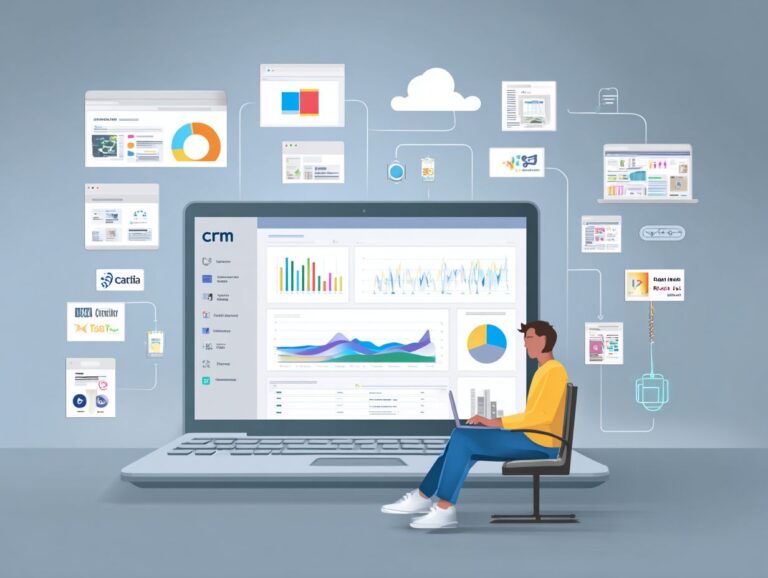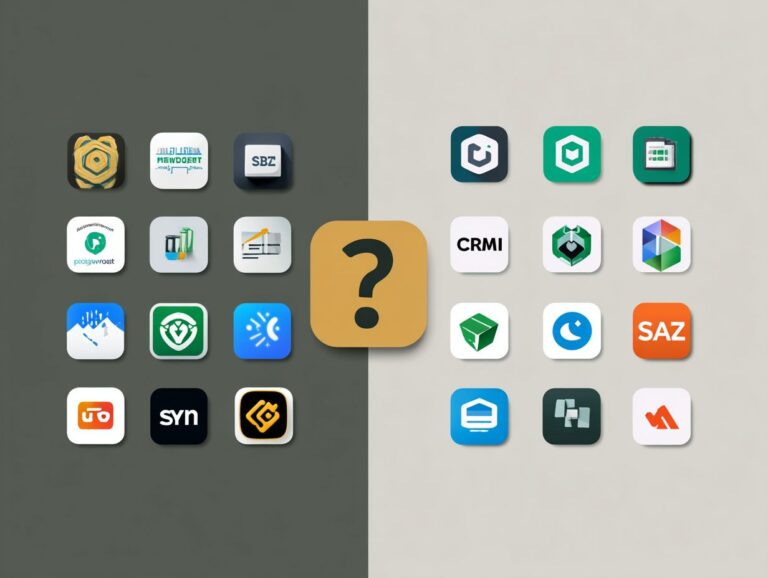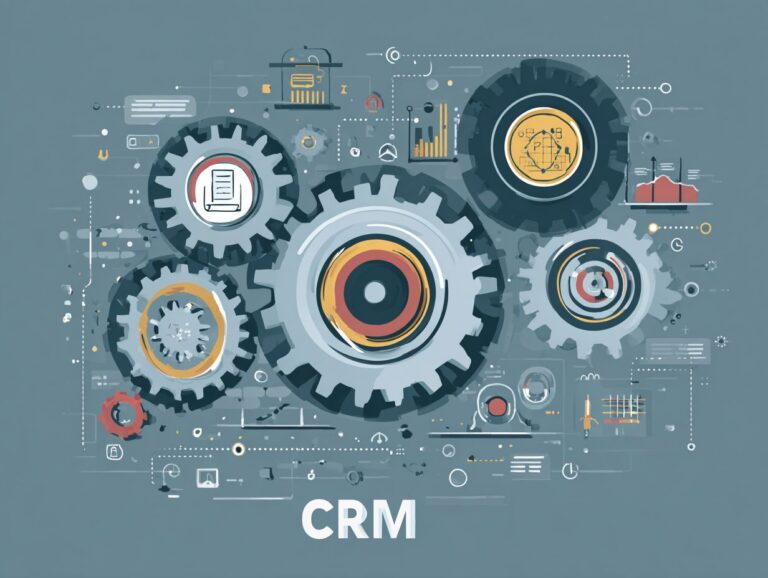CRM Personalization: Techniques, Benefits, and Strategies
In today’s market, using CRM tools to customize interactions is essential for creating strong customer connections and enhancing their experience. Tools like SuperOffice and Watermark provide CRM benefits that greatly improve customer retention and sales productivity. This article looks at important methods for personalizing CRM, the changes it brings, and practical steps to use in your business. Learn how personalized experiences can improve your method of connecting with customers and support long-lasting growth.
Key Takeaways:
- Personalization in CRM is essential to know and interact with customers effectively.
- Collecting and analyzing customer data, segmenting, and targeting behavior are key techniques for successful CRM personalization.
- CRM customization helps businesses to connect more with customers, leading to better sales and higher income.
- Techniques for CRM Personalization
- Benefits of CRM Personalization
- Strategies for Implementing CRM Personalization
- Challenges in CRM Personalization
- Frequently Asked Questions
- 1. What is CRM personalization and why is it important?
- 2. What are some techniques for implementing CRM personalization?
- 3. How can CRM personalization benefit businesses?
- 4. What are some key strategies for successful CRM personalization?
- 5. Can CRM personalization help businesses stand out from their competition?
- 6. What are some potential challenges with implementing CRM personalization?
1. Definition and Importance

CRM personalization means adjusting marketing and customer interactions to match each person’s data and likes. This approach is important because research shows that personalized emails can increase open rates by 29%. Amazon uses complex algorithms to study previous purchases and browsing habits to send personalized recommendations, which greatly increase sales.
Using CRM software like Salesforce or HubSpot allows businesses to segment audiences effectively, ensuring targeted messaging. Companies can use customer information from these tools to create customized marketing strategies that connect with users, leading to more engagement and increased sales.
2. Overview of CRM Systems
CRM systems serve as centralized databases that manage customer information, enhancing the efficiency of communication and relationship-building efforts. Well-known CRM systems such as SuperOffice and Watermark provide strong features that simplify communication with customers and the creation of information.
SuperOffice excels in capturing customer data and provides extensive tracking options for sales activities, ensuring teams can follow leads effectively.
Watermark focuses on powerful marketing tools that allow you to separate customers into segments for targeted campaigns. Both systems help improve sales efficiency by giving businesses up-to-date data, allowing them to adjust their strategies based on how customers act and current patterns.
For those interested in further enhancing their CRM utilization, exploring the CRM integration benefits and best practices can provide valuable insights. This use of data improves the overall results of marketing.
Techniques for CRM Personalization
Successful CRM customization uses different methods that use information gathering and division to learn about customer needs and likes, aligning with the principles outlined in our analysis of Customer Experience And Technology: A Revolutionary Approach.
1. Data Collection and Analysis
Gathering detailed customer information from various interactions is important for accurate analysis and personalizing experiences.
Use tools like Google Analytics and HubSpot to collect important information. Google Analytics offers free tracking of user behavior on your website, enabling you to monitor page views, session duration, and bounce rates.
HubSpot, starting at $50/month, allows for advanced segmentation based on user interactions and demographics. Looking at this data helps improve your marketing efforts by spotting patterns and likes, which then allows you to reach out to the right audience. For example, if data shows that many users leave product pages quickly, try A/B testing different layouts or headlines to improve user interest.
2. Segmentation Strategies
Segmentation strategies enable businesses to categorize customers into meaningful groups based on shared characteristics and behaviors.
To develop effective segmentation strategies, start by identifying key criteria. For demographics, consider age, gender, and location; for purchase history, analyze spending patterns and product preferences; and for engagement levels, track interaction with previous campaigns.
Tools like Mailchimp let you create groups based on these criteria, allowing you to target exactly. Using ActiveCampaign, you can make these segments more detailed by tagging users based on what they do, leading to email campaigns that fit each user. If you’re interested, explore our guide on how to integrate CRM systems to support your business goals.
For instance, send a special offer to high-engagement customers who frequently purchase, enhancing both retention and conversion rates.
3. Behavioral Targeting

Behavioral targeting uses customer actions to customize marketing strategies, greatly increasing involvement and sales. To implement behavioral targeting effectively, start by integrating tools like Google Ads and Facebook Pixel.
For instance, you can set up retargeting campaigns that display ads to users who visited your website but didn’t complete a purchase. Brands using this method have seen sales go up by 50% with campaigns targeting shoppers who leave items in their carts.
Analyze user behavior to customize ads based on their interactions-like showing different products or offers based on previously viewed items. Gradually improve your ads by using gathered information to get the best results.
Benefits of CRM Personalization
Using CRM personalization strategies results in many advantages, such as better customer interaction and higher sales efficiency. This approach enhances traditional customer relationship management (CRM) methods by integrating personalized experiences (see our Customer Relationship Management guide for more insights).
1. Improved Customer Engagement
Customized communication strategies can increase customer interest by up to 50%, helping create stronger relationships.
Including what customers like in your marketing can greatly improve communication success. For example, brands like Amazon use browsing history to suggest products that fit each user, leading to increased sales.
Tools like Mailchimp allow you to segment your audience based on behavior, sending targeted campaigns that speak directly to their interests. Trying different subject lines and content formats through A/B testing can show what connects best with your audience. Over time, this method increases interaction and builds customer loyalty.
2. Increased Sales and Revenue
Custom CRM plans can increase sales revenue by up to 30% by improving customer loyalty. For example, businesses that used customized follow-up notices experienced a 20% rise in conversion rates.
Utilizing CRM tools like Salesforce or HubSpot, you can segment your audience based on past purchases and behaviors. This lets you send focused email campaigns that match specific customer needs.
Including personalized content in your sales approach-such as giving specific product suggestions-can greatly increase customer interest and loyalty. By analyzing customer data effectively, companies can create meaningful interactions and drive sales growth substantially.
Strategies for Implementing CRM Personalization
Using effective CRM personalization involves using tools that handle tasks automatically and making content specifically for customers’ needs.
1. Integrating AI and Automation

AI tools can make CRM tasks easier, improving workflows and helping to learn more about customers. Salesforce Einstein offers predictive analytics, allowing businesses to tailor communications based on customer behavior.
For example, it can analyze past purchase patterns to suggest timely follow-up emails, increasing engagement rates. Zoho CRM’s AI tools help you manage regular tasks, like sending custom messages at various points.
To implement these tools effectively, start by integrating them with existing customer databases, ensuring seamless data flow. Regularly check performance data to improve strategies, which makes customer interaction better and builds loyalty.
2. Creating Personalized Content
Developing content that matches what customers like is important for successful marketing and more interaction. Start by analyzing customer data to identify trends and preferences. Use tools like Google Analytics to track user behavior on your website, which helps pinpoint content interests.
For instance, an email campaign can change its content according to the products a customer often looks at. If a shopper frequently browses the outdoor gear section, email them with news about new products or sales in that area. This targeted approach increases the likelihood of engagement and conversion.
Challenges in CRM Personalization
While CRM customization has benefits, it also faces big problems, especially with keeping data private and growing effectively.
1. Data Privacy Concerns
Data privacy concerns, especially under regulations such as GDPR, represent a critical challenge for CRM personalization efforts.
To handle these challenges well, organizations should follow clear, practical steps.
- Start by implementing clear data retention policies that dictate how long customer data is stored and when it should be deleted.
- Use tools like OneTrust to take care of privacy rules, simplifying consent handling and dealing with incidents.
- Regular audits of your CRM data practices are essential, ensuring ongoing adherence to regulations.
- Educating employees about privacy rules helps create a workplace that follows the law, lowering the chance of accidental data mishandling.
2. Scalability Issues
As businesses expand, they may face challenges in handling increased demand. It becomes important to standardize processes and improve teamwork within the company to keep CRM personalization effective.
A practical approach is to use a CRM system like HubSpot or Salesforce that can easily handle an increasing number of customers. These platforms provide tools to sort customers based on their behavior and preferences, enabling personalized communication.
Standardizing core processes-like response templates and customer interaction protocols-helps maintain consistency across teams. For example, using a shared resource can help staff handle customer questions well, no matter their department, keeping a personal feel even as your customer numbers grow.
3. Future Trends in CRM Personalization

As technology progresses, trends in CRM customization will rely more on data analysis and automatic processes. Company A uses predictive analytics to tailor marketing strategies by analyzing customer actions and sending personalized offers at optimal times. Company B uses automation tools like HubSpot to simplify customer interactions, providing quick support based on user actions.
Hyper-personalization can be seen in Company C’s approach, which employs machine learning to analyze social media interactions, thereby customizing outreach efforts. These strategies increase customer engagement and help keep more customers by building stronger connections.
In particular, integrating CRM systems effectively can enhance your ability to track key metrics and KPIs, as explored in our deep dive into CRM integration.
Frequently Asked Questions
1. What is CRM personalization and why is it important?
CRM personalization is the process of tailoring customer interactions and experiences based on their individual preferences, behaviors, and characteristics. It is important because it allows businesses to build stronger relationships with their customers, increase customer satisfaction, and drive sales and revenue.
2. What are some techniques for implementing CRM personalization?
There are various ways to change CRM to better suit your needs, such as using customer information to separate and target specific groups, sending customized messages and content, and providing personalized recommendations and offers based on customer behavior and history.
3. How can CRM personalization benefit businesses?
Personalizing CRM helps businesses by making customers happier and more loyal, keeping them around longer and encouraging repeat purchases, and increasing sales and money through focused and meaningful marketing actions.
4. What are some key strategies for successful CRM personalization?
Key ways to make CRM more personal include gathering and studying customer data, knowing what customers like, creating specific experiences and offers, and frequently checking and changing plans based on what customers say and data.
5. Can CRM personalization help businesses stand out from their competition?
Yes, CRM customization can help businesses be different from their competitors by providing special and customized experiences that meet their customers’ specific needs, likes, and actions. This can create a competitive advantage and drive customer loyalty and retention.
6. What are some potential challenges with implementing CRM personalization?
Some possible problems with using CRM personalization are handling and analyzing a lot of customer data, keeping data private and secure, and using the data to make personalized experiences without making customers feel overwhelmed or alienated. There may be difficulties in finding the right mix between customization and automation, and creating a unified customization plan across various channels and contact points.





